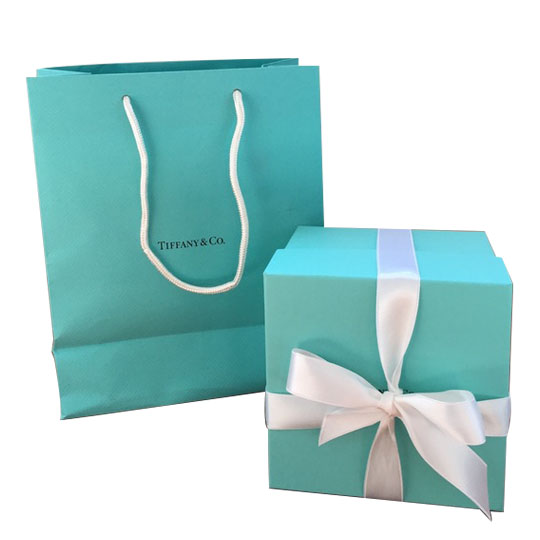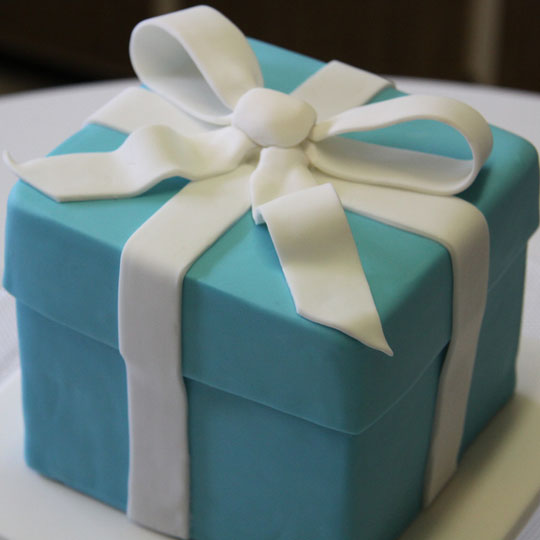We’ve covered lots of iconic packaging here—whether it’s about food, drink, or cosmetic brands. The one unifying thing about all our choices is that the packaging is always meant for one specific product—which is why this choice for iconic packaging is so unique. The Tiffany Blue Box isn’t meant for just one product, it’s meant to represent an entire retail enterprise. To say it’s successful is an understatement, as it’s become one of the most recognizable packaging designs ever. Let’s take a look at why.
Charles Lewis Tiffany and John B. Young founded “Tiffany, Young and Ellis” in 1837. Initially selling a variety of stationery items in Lower Manhattan, the store’s emphasis changed to fine jewelry in 1853 when Tiffany took control of the business. He also shortened the company name to Tiffany & Co. to reflect the change in direction and leadership. Today, Tiffany’s (as it’s commonly called) is one of the world’s best-known luxury jewelry retailers.
Tiffany’s adopted a light blue colour for their branding, first using it on the cover of their Blue Book, a mail order catalogue they began publishing in 1845. The turning point for their branding came in 1886 when Tiffany’s introduced its signature diamond engagement ring. Featuring a six-prong setting, it came nestled inside a blue jewelry box—which soon became as desired as the ring itself. Though it’s assumed the blue colour was chosen to reflect the popularity of turquoise jewelry at the time, nobody knows the absolute truth of that colour choice.
But, that light blue colour is so iconic that it was trademarked in 1998. Tiffany Blue, also known as forget-me-not blue and robin’s blue egg, is listed as Pantone No. 1837 (the year Tiffany’s was founded). To stress just how impactful Tiffany Blue is—other examples of trademarked colours include Barbie Pink, Cadbury Purple, UPS Brown and 3M Canary Yellow. Trademarks are typically restricted to specific industries or areas of expertise, meaning as long as your business isn’t in the same category of business as a colour trademark owner, you’d likely be able to use it. That said, Tiffany Blue is one of the most protected colours in branding.

And that’s not the only thing Tiffany’s has protected. The entirety of the packaging is trademarked, including not only the blue-coated paper (created by Pantone), and the white satin ribbon used for securing everything, but also the name itself—the Tiffany Blue Box. As an interesting note, the ribbon is tied on the counter in front of the customer, as the final touch to their branding. And, the only time Tiffany’s deviates in packaging is during the holidays, when it uses a red ribbon instead.
Tiffany Blue Boxes are so sought after that incredible steps are taken to protect them. In 1961, Tiffany’s allowed Paramount Pictures to film part of Breakfast at Tiffany’s inside their flagship location. To prevent the theft of any blue boxes, 40 armed guards were posted around the store. And, in today’s world of selling anything and everything online, empty boxes and bags are often posted on sites like Etsy or eBay. Though Tiffany’s has been unable to legally halt this practice, they do frown upon it.

In a brilliant marketing move, the Tiffany Blue Box is now sold as a wearable charm. Cast in sterling silver and a Tiffany Blue enamel finish, it’s a highly sought-after piece in their jewelry lineup. It’s so popular, in fact, that the Tiffany Blue shopping bag is available as a wearable charm, as well.

If that weren’t enough, the Tiffany Blue Box is so beloved that it’s even recreated in baked goods. In doing a quick search online, we found birthday cakes, cupcakes, cookies with icing, and even Tiffany Blue Box cake pops. We’re kinda hungry now!
Tiffany & Co. celebrated its 175th anniversary in 2012, long having cemented itself as one of the world’s best jewelry providers. And thanks to such a long and storied history, the Tiffany Blue Box has certainly earned its status as iconic packaging, too. Do you feel there’s packaging out there worthy of the iconic packaging title as well? Let us know, we’d love to showcase it!




